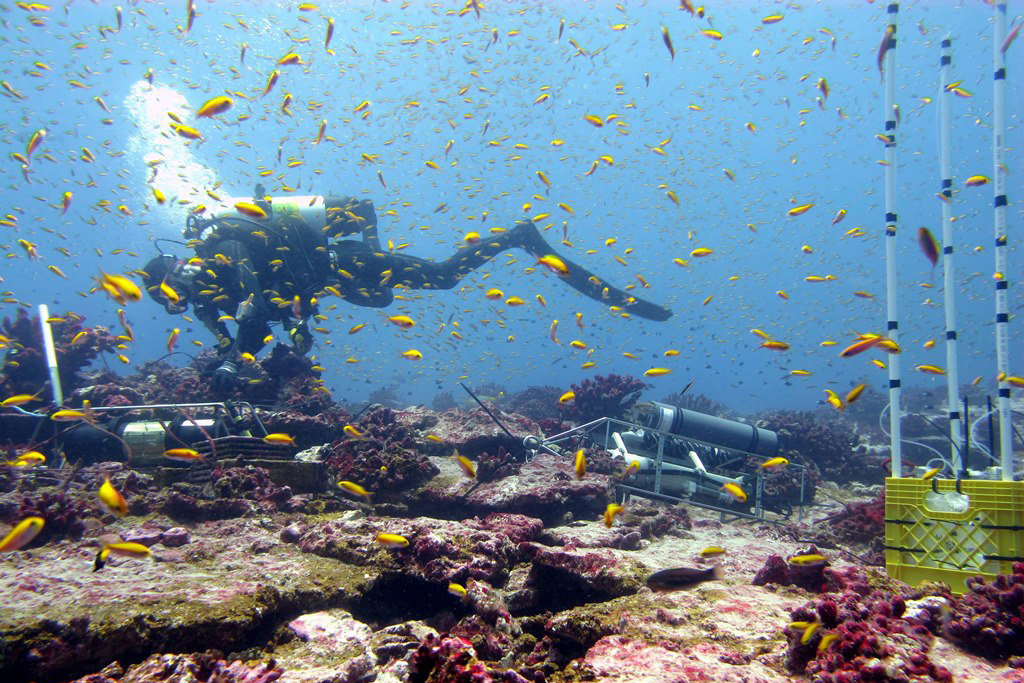What do we survey
The changes in ocean conditions and how they impact coral reef ecosystems; such as investigating how thermal stress impacts coral bleaching, how water temperature changes with depth in coral reefs, and how ocean chemistry is changing, and whether coral reef habitat is growing or eroding.
How do we survey
We deploy stand-alone instruments on the reef for several years such as STRs (subsurface-temperature-recorders), CAUs (calcium-accretion-units), and BMUs (bioerosion-monitoring-units). We also deploy an assortment of instruments called a diel suite for several days to weeks (includes PAR, DO, ADCP, pH, etc.). Water samples and CTD surveys are conducted off dive boats or NOAA research vessels at random, fixed, and offshore sites. The carbonate budgets methodology, which we adapted for Pacific coral reefs, estimates whether a reef is growing, eroding, or at a tipping point.
What do we measure
Water temperature, carbonate chemistry, sea water pH, dissolved oxygen (DO), photosynthetic active radiation (PAR), and more. We also measure the rate of reef habitat production at fixed sites using carbonate budgets as a proxy.
Why do we survey
By revisiting these sites in regions since 2013 we can monitor the impact of changing ocean conditions to coral reefs to inform management decisions. The methodologies we use are chosen to leverage the usability and reproducibility of our data such that it can be integrated with other datasets.
GitHub Repositories
Access Data
The NCRMP Visualization tool hosts water samples for random sites. Water chemistry (including for fixed sites) is archived with OCADS, and all other data is organized in NCEI collections and cataloged in our NCRMP metadata catalog for each distinct region. Refer to Methods for details on specific surveys.
Contact
- Principal Investigator: Hannah Barkley (hannah.barkley@noaa.gov)
- Data Services Team: nmfs.pic.credinfo@noaa.gov


